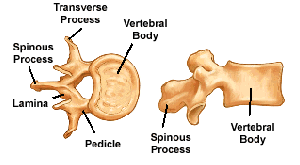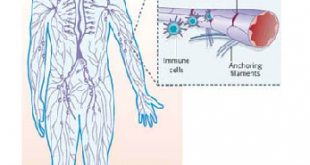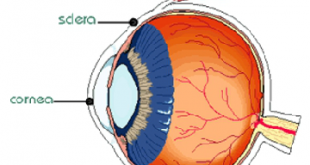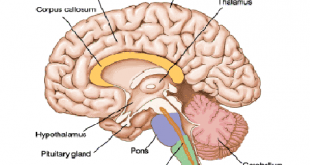SKIN Skin is the largest sensory organ in our body. It is described as: There are 3 layers of skin: Epidermis– a thin, cellular membrane layer. Corium or Dermis– dense, fibrous, connective tissue proper. Subcutaneous tissue– thick, fat-connecting tissue. EPIDERMIS The epidermis is the outermost, total cellular layer of …
Read More »What is Vertebral Column and Structure of Vertebra
VERTEBRAL COLUMN The vertebral column consists of 26 bone segments called vertebrae that are arranged in five divisions from the base of the skull to the tail bone. The first seven bones of the vertebral column from the neck bone are the cervical (C1-C7) vertebrae. These vertebrae do not articulate …
Read More »What is Oral Cavity
ORAL CAVITY (THE MOUTH) The alimentary canal begins with the oral cavity or the mouth. The major parts of the oral cavity are: Cheeks: They form the walls of the oval-shaped oral cavity. Lips: They surround the opening to the oral cavity. Hard palate: It forms the anterior portion of …
Read More »Male Reproductive System
This Article is useful for NEET, UPSC and Other Aspirants. MALE GONADS The male gonads consist of a pair of testes, also called testicles. They develop in a sac, called scrotum which is present in the extra abdominal region. The scrotum exposes the testes to the lower temperature than …
Read More »PATHOLOGICAL TERMS RELATED TO THE RESPIRATORY SYSTEM
UPPER RESPIRATORY DISORDERS Croup: Acute respiratory syndrome in children and infants, characterized by obstruction of the larynx and by barking cough. Diptheria: Acute infection of the throat and upper respiratory tract caused by the bacteria Cornyebacterium. Epistaxis: A condition when bleeding occurs through nose. Pertussis: Bacterial infection of the pharynx, …
Read More »What is Lymphatic System
LYMPHATIC SYSTEM (FOR NEET, SSC & UPSC) The lymphatic system is a part of immune system; it helps the body to fight against disease and infection. The lymphatic system includes a network of thin lymphatic vessels that branch like blood vessels into tissues throughout the body. Lymphatic system also removes …
Read More »Human Eye Structure
HUMAN EYE (FOR NEET, SSC, UPSC) Human beings possess a pair of eye. These are the organ of sight. They act as an important sensory organ. DESCRIPTION OF HUMAN EYE Light rays enter the dark center of the eye, the pupil. The conjunctiva is a mucous membrane that lines the …
Read More »Structure of Human Ear
HUMAN EAR (Helpful in SSC,APPSC,NEET and UPSC) The human ear is an organ of hearing and equilibrium that detect and analyses noise by transduction and maintains balance in our body. A mechanical injury that might stimulate receptor cells in the ear would produce sensations of sound, ringing in the ears. …
Read More »What is Central Nervous System
CENTRAL NERVOUS SYSTEM Human central nervous system consists of 2 parts: BRAIN The brain is the primary center for regulating and co-coordinating body activities. The largest part of the brain is the cerebrum. The cerebral hemispheres are the paired halves of the cerebrum. Each hemisphere is divided into four major …
Read More »What is Pituatary Gland
PITUITARY GLAND (Hypophysis) Pituitary is a pea-shaped gland, its anterior part is attached to the hypothalamus with the help of hypophysical portal blood vessels and posterior part is attached to the axons of the hypothalamic neurons. It is known as the master gland of our body. Morphologically, pituitary gland is …
Read More » IT2EDU Empowering Education Through Technology
IT2EDU Empowering Education Through Technology




